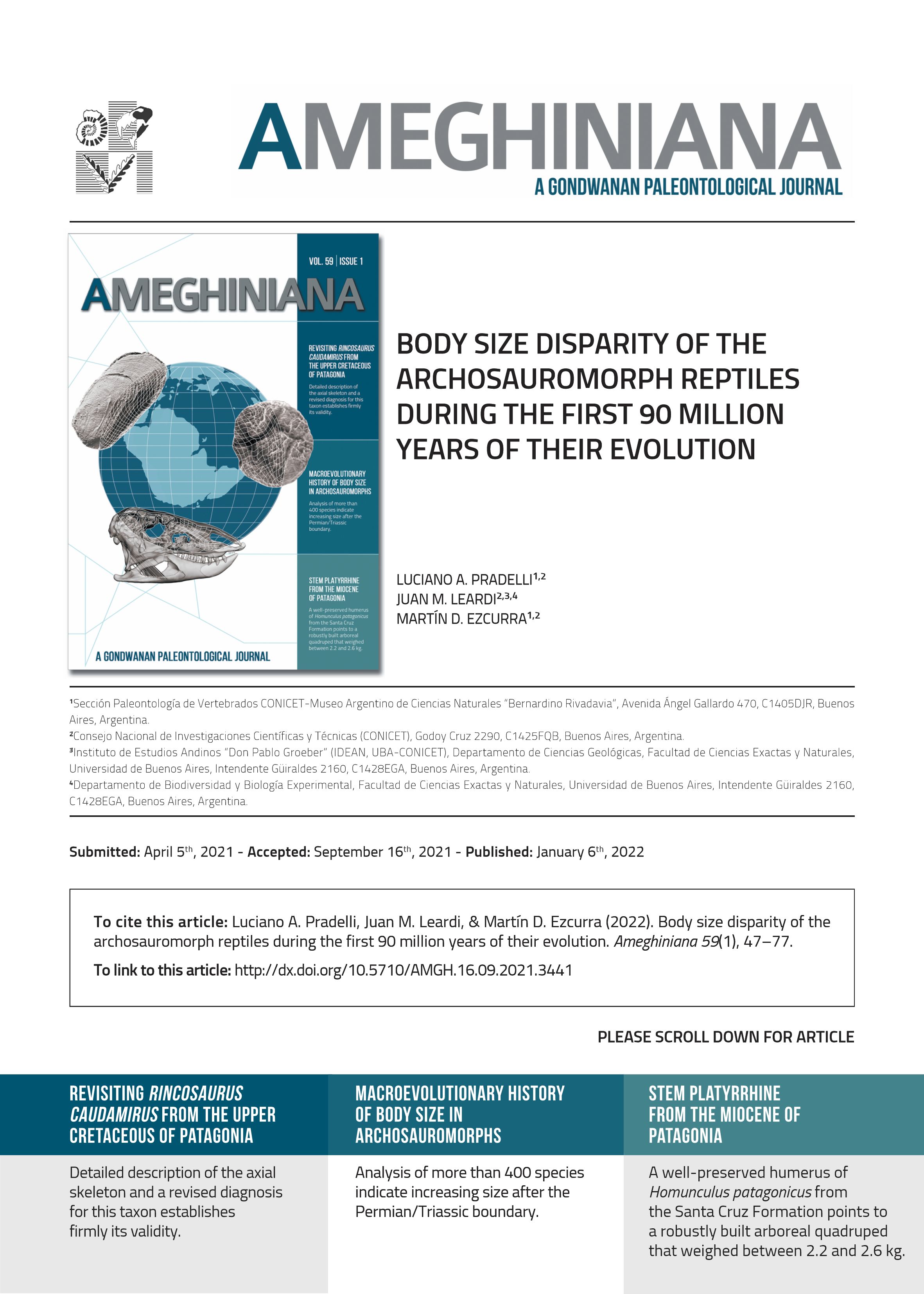BODY SIZE DISPARITY OF THE ARCHOSAUROMORPH REPTILES DURING THE FIRST 90 MILLION YEARS OF THEIR EVOLUTION
DOI:
https://doi.org/10.5710/AMGH.16.09.2021.3441Keywords:
Archosauromorpha, Diapsida, macroevolution, adaptive radiation, palaeolatitude, Bergmann's RuleAbstract
An important parameter in the study of the macroevolutionary history of a clade is the variation of its body size. However, the study of this parameter in archosauromorphs has been restricted to Archosauria and the disparity in body size has not been exhaustively explored. In the present work we explore the variation in body size of more than 400 known Permian–Early Jurassic archosauromorph species in the context of their early adaptive radiation. We analysed the disparity of body size over time and the relationship between this parameter and the palaeolatitudinal distribution of species. From these analyses, it was found that the disparity of body size of archosauromorphs increased after the Permian–Triassic limit. In the case of Pseudosuchia and non-dinosaurian Pan-Aves, the Triassic–Jurassic extinction seems to have selectively affected medium to large-sized forms and the body size disparity of these groups decreased significantly. In contrast, dinosaurs increased in body size and the disparity values did not change after the Triassic–Jurassic extinction event. Regarding relationships between body size and palaeobiogeography, pseudosuchians show a pattern of decrease of body size towards higher palaeolatitudes, which contrasts to what is proposed by the Bergman's Rule. These results may invite to explore in the future possible explanations linked to physiological factors because many groups of extant heterothermic animals show this pattern. No pattern has been recognized for other archosauromorph clades. These analyses show that the dynamics of body size were not as simple as thought in the early evolution of Archosauromorpha.

Downloads
Additional Files
Published
Issue
Section
License
Authors publishing in Ameghiniana have the option of making their article freely available online. Authors opting for the Open Access must pay a fee of $300 (US dollars) to cover article-processing costs and to ensure the article is made open access. Please contact the Production Team after the acceptance of your manuscript if you are interested in making your article Open Access. This option implies by default a license Creative Commons Attribution Non-Commercial-NoDerivs License (CC BY NC ND). If your funding institution requires a different licensing option please communicate this to the Production Team after the acceptance of your manusctipt.










